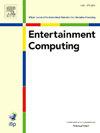Gaming disorder and its association with depression, social anxiety, and risk perception during the COVID-19 pandemic: A study using a Gaussian graphical model and moderated network models
IF 2.4
3区 计算机科学
Q2 COMPUTER SCIENCE, CYBERNETICS
引用次数: 0
Abstract
During the COVID-19 pandemic, many scholars in the field of behavioral addiction examined the risk of gaming disorder (GD). The association between GD, depression, social anxiety, and risk perception toward COVID-19 among Chinese university students has remained largely uninvestigated, especially using network analysis. Therefore, the present study (N = 1794) examined the relationship between these variables during the pandemic using Gaussian graphical model (GGM) and Moderated Network Model (MNM) approaches. In the GGM and MNM, GD had a significant interaction with depression. Individual risk perception and public risk perception had stronger connections in the network, as did depression and social anxiety. In addition, ‘fatigue’ was identified as the core symptom of depression. Neither moderation effects (i.e., three-way interaction between GD, depression, social anxiety, and risk perception) nor gender differences in network comparisons were found. These results suggest that relieving negative emotional states may have helped prevent GD during the COVID-19 pandemic, while the influence of risk perception on GD and negative emotions needs to be further examined.
COVID-19大流行期间游戏障碍及其与抑郁、社交焦虑和风险感知的关联:一项使用高斯图形模型和调节网络模型的研究
在2019冠状病毒病大流行期间,许多行为成瘾领域的学者研究了游戏障碍(GD)的风险。在中国大学生中,GD、抑郁、社交焦虑和对COVID-19风险认知之间的关系在很大程度上仍未得到调查,特别是使用网络分析。因此,本研究(N = 1794)使用高斯图形模型(GGM)和调节网络模型(MNM)方法检验了大流行期间这些变量之间的关系。在GGM和MNM中,GD与抑郁有显著的交互作用。个体风险感知和公共风险感知在网络中有更强的联系,抑郁和社交焦虑也是如此。此外,“疲劳”被确定为抑郁症的核心症状。在网络比较中,既没有发现适度效应(即焦虑、抑郁、社交焦虑和风险感知之间的三向交互作用),也没有发现性别差异。这些结果表明,缓解负面情绪状态可能有助于预防新冠肺炎大流行期间的GD,而风险感知对GD和负面情绪的影响有待进一步研究。
本文章由计算机程序翻译,如有差异,请以英文原文为准。
求助全文
约1分钟内获得全文
求助全文
来源期刊

Entertainment Computing
Computer Science-Human-Computer Interaction
CiteScore
5.90
自引率
7.10%
发文量
66
期刊介绍:
Entertainment Computing publishes original, peer-reviewed research articles and serves as a forum for stimulating and disseminating innovative research ideas, emerging technologies, empirical investigations, state-of-the-art methods and tools in all aspects of digital entertainment, new media, entertainment computing, gaming, robotics, toys and applications among researchers, engineers, social scientists, artists and practitioners. Theoretical, technical, empirical, survey articles and case studies are all appropriate to the journal.
 求助内容:
求助内容: 应助结果提醒方式:
应助结果提醒方式:


